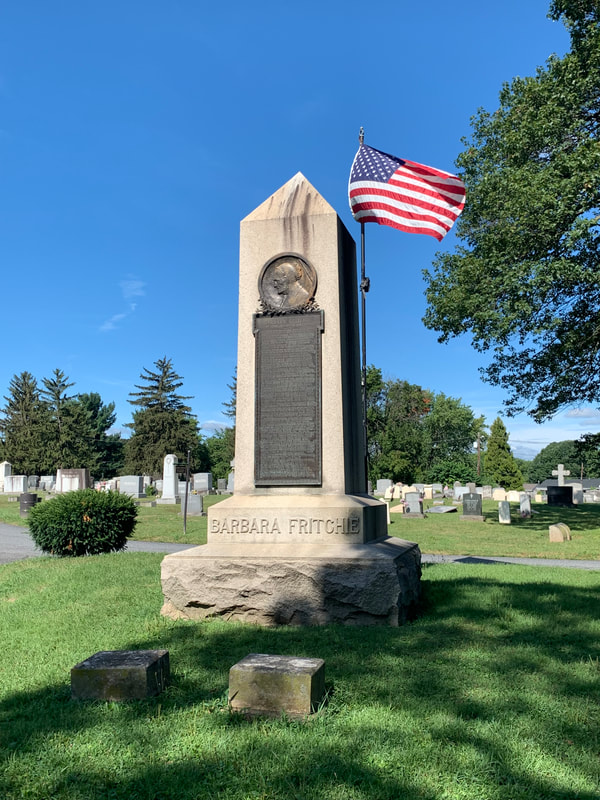|
A structure housing memorials to famous or illustrious individuals usually chosen by a group of electors. This is the definition Merriam-Webster offers for a “hall of fame.” There are plenty of national “halls of fame,” the most famous perhaps being those related to professional sports and music. Cooperstown, New York is synonymous with baseball and Canton, Ohio professional football. Just up the road in Cleveland, one can find the Rock n Roll Hall of Fame. Fittingly, Nashville, Tennessee is home to the Country Music Hall of Fame, but did you know that a two hour ride southeast on I-24 would bring you to Chattanooga to enjoy the wonderment and majesty of the International Towing and Recovery Hall of Fame and Museum?—Talk about “wrecking” a vacation! I was inspired to seek out more “Halls of Fame” across the country. I know it’s late in the summer at this point, but here’s a unique list of ten places that you may (or may not) have interest in making a pilgrimage to in the future: *The International Bowling Museum and Hall of Fame (Arlington, Texas) *National Inventors Hall of Fame (Alexandria, Virginia) *Freshwater Fish Hall of Fame (Hayward, Wisconsin) *Pinball Hall of Fame (Las Vegas, Nevada) *National Mining Hall of Fame (Leadville, Colorado) *Robot Hall of Fame (Pittsburgh, Pennsylvania) *The Burlesque Hall of Fame (Las Vegas, Nevada) *National Barber Museum and Hall of Fame (Canal Winchester, Ohio) *National Toy Hall of Fame (Rochester, New York)  No offense to the others, but I’d really consider making a trip to see the Toy Hall of Fame in Rochester. I’m suddenly reminded that I had a “poor man’s version” of this repository in my childhood home basement. It came to light back in 2004 as my brothers and I were tasked in clearing out said house after the death of our father. The shelves of our unfinished basement were still filled with the likes of old board games (eg. Monopoly, Chutes and Ladders, Battleship, Candyland, Stratego), novelty lunchboxes, Matchbox and Hot Wheels Cars and track, GI Joe dolls, Fisher Price playsets, Tonka Trucks, Evel Knievel stunt sets, HO gauge trains and electric slot cars set-ups, Wacky Packages Trading Cards/stickers, Rock’em Sock’em Robots, Star Wars figures, and the first handheld electronic gadgets such as Mattel Electronic Football and early video game consoles such as Intellivision and Colecovision. As a final note, I don’t mean to brag, but I had two vibrating, electronic football boards and all 28 NFL teams from my youth. Yes, those were the little plastic figurines that moved thanks to a vibrating tin field beneath their bases, and it was a regular occurrence to see guys going in circles or figure 8’s while the linebackers seemed to be doing more square-dancing than “tackling” ballcarriers. The most memorable part of the experience was the ear piercing buzz and hum. Hey, “It was what it was”—a far cry from the realistic quality of today’s Madden NFL video game series my boys grew up playing. Back in 2017, we launched the Preservation and Enhancement Fund of Mount Olivet Cemetery, a 501 © (3) nonprofit entity with a goal of showcasing and securing our amazing cultural landscape which is a unique blend of nature, art, architecture and the human condition. With the assistance of cemetery staff and our Friends of Mount Olivet membership group (begun in Spring, 2020), our mission is to preserve our historic records, on premises house and chapel structures and, most noticeably, thousands of vintage gravestones and monuments. Our hope is to educate visitors and Frederick residents alike by sharing the fascinating background of Mount Olivet and those who reside in it, numbering over 40,000. The “Friends” group is active in related activities designed to generate enthusiasm in not only history research and gravestone preservation, but continued fundraising and spreading community awareness of our special place through engaging and entertaining educational programs, special events and anniversary commemorations. Along those lines, I thought about forming a Hall of Fame—a Mount Olivet Hall of Fame. As the definition at the onset specifically mentions that Hall of Fames consist of a collection of memorials to famous or illustrious individuals, its easy to see that we are already there “so to speak” as our grounds boast memorials to the over 40,000 already buried here. I’ve appropriately touted this place as a “museum without walls” and this definitely drives home my point. In talking with colleagues and other members of our Friends group, we found it best to frame the new “Hall” on the monuments, themselves, and not specifically on the person (s) buried beneath. The cover photo for this story at the top is from The Hall of Fame for Great Americans, an outdoor sculpture gallery located on the grounds of Bronx Community College in the Bronx, New York City. Completed in 1900, It is the first such hall of fame in the United States and part of the University Heights campus of New York University. Designed by the famed architect Stanford White, a 630-foot stone colonnade half-encircles the university library and houses 98 bronze portrait busts of a number of prominent Americans. Interestingly, the photo at the onset of this story captures inductee and inventor Alexander Graham Bell, he of telephone fame and fortune. Mr. Bell and his wife, Mabel (the original “Ma Bell”), actually visited Frederick in April, 1915. While here, they visited Mount Olivet and we know they specifically paid homage to Francis Scott Key and Barbara Fritchie at their respective gravesites. So back to our, new Hall of Fame, it is the above-ground masterpiece of art and craftmanship that provides the criteria for consideration, nomination and election to the newly launched “Mount Olivet Monument Hall of Fame.” The “structure” and memorials are already in place, some have been for well over a century and a half. A new component will soon appear in the form of a virtual gallery on the MountOlivetHistory.com site. The inaugural class of recipients was announced, by way of a walking tour, at our first annual Friends of Mount Olivet picnic held on August 21st, 2021. A nominating committee within of Friends Group will handle the honors in future years, however, we thought it would be fitting for the first group of inductees to our “Hall of Fame” be chosen by an individual who has the unique distinction of having spent more time within Mount Olivet alive than any other human being in history. This would be John Ronald “Ron” Pearcey, our Superintendent. Ron originally came to work here in 1966, and he revels in telling visitors that he prides himself on waking up in a cemetery each and every day. So, with no further ado, I present to you, the reader, the inaugural class of 2021 for the Mount Olivet Monument Hall of Fame. Francis Scott Key Monument Location: Star-Spangled Plaza Date of Placement: August, 1898 Decedents: Francis Scott Key and Mary Tayloe (Lloyd) Key In mid-August 1898, this monument was unveiled amidst great fanfare. It took over three decades of fundraising, but the achievement would be heralded in newspapers across the country. This would serve as Francis Scott Key’s third, and (hopefully) final resting place as the “Star-Spangled Banner” author and his wife Mary are encased in a vault built underneath the monument. The New York City studio of Alexander Doyle received the contract to create this lasting memorial to the Frederick native, and a young, Italian immigrant named Pompeo Coppini would be charged with sculpting the figures of Key, and three other allegorical figures consisting of Columbia (signifying patriotism) and two boys (representing music and war). Most interesting is the fact that the sculptor was given the job of artistically styling all four stanzas of Key’s song on a bronze tablet located at the rear of the monument. For many years, this was one of the only locations where the US flag was allowed to fly 24/7. The granite pedestal is comprised of several pieces of granite and stands 18-foot tall. The Key statuette stands 12-foot tall and depicts Francis gesturing toward the US flag as he did at the Battle of Fort McHenry in September, 1814. Barbara Fritchie Monument Location: Area MM/Lot 00 Date of Placement: September, 1914 Decedents: Barbara Fritchie and John Casper Fritchie The second most famous person in Mount Olivet was removed here just like Francis Scott Key. This, of course, is our Civil War heroine, Barbara Fritchie. It is interesting to note that both of these individuals, Frederick’s most famous, became household names because of a song/poem about the US flag under attack by an enemy during wartime. This monument was erected in 1914, after the star of John Greenleaf Whittier’s poem and her husband (John) were relocated here the previous year from their original grave plot in Frederick’s German Reformed Graveyard, a location now known as Memorial Park. The 12-foot tall obelisk is extremely modest and scaled down in comparison to an earlier proposed memorial to be placed at the location in downtown Frederick where the fountain now stands at the intersection of Seventh and Market streets. Bronze pieces are affixed to this large granite shaft, each sculpted by Artist James E. Kelly (1833-1855). These include a profile view of Barbara in the form of a large medallion, along with Whittier’s 1863 poem in its entirety for visitors to read. Gov. Thomas Johnson, Jr. Memorial Location: Area MM/Lot 38 Date of Placement: 1914 Decedents: Gov. Thomas Johnson, Jr. Most gravestones simply include a decedent’s name and vital dates separated by a dash. Unlike the bronze adorations found interspersed with granite for the Key and Fritchie graves, Governor Thomas Johnson’s white marble gravestone boasts a pretty impressive resume ranging from his participation in the Continental Congress and leading troops in the American Revolution to becoming Maryland’s first elected governor and serving as one of the country’s first supreme court justices. Johnson was originally buried in an underground family crypt within Frederick’s All Saints graveyard, once located on the south side of Carroll Creek atop a hill that stands north of East All Saints’ Street. The church sold the graveyard property in 1913, at which time over 300 individual’s remains were removed here to Mount Olivet. Most were reinterred within church purchased lots in Area MM. Sponsored by the Frederick Daughters of the American Revolution, an earlier marker for Thomas Johnson, Jr. accompanied his body here, and is placed in front of the larger memorial created and placed here after his re-interment. The "First" Monument Location: Area F/Lot 12 Date of Placement: May, 1854 Decedents: Mary Louisa and Catharine Elizabeth Norris The history books are a commonly filled with “firsts.” Here at Mount Olivet, research back in the year 2016 helped with the discovery of the first grave monument placed on our grounds. Interestingly, this monument had no connection to our much ballyhooed, "first burial" of Mrs. Ann Crawford in late May, 1854. A beautiful, twin-columned monument of Parian marble had been erected in place earlier that month of May (1854) awaiting its recipients. The first monument in Mount Olivet was a lasting gift from grieving parents who once operated a grocery store in the first block of West Patrick Street. Basil and Jane Norris felt that the new, garden cemetery on the southern approach of town would be a more fitting resting place for two young daughters who had died earlier in the decade. Seventeen year-old Mary Louisa Norris and sister Catherine Elizabeth Norris (aged 23) would both die in 1851, and were originally buried in Frederick’s All Saints’ graveyard. They would be re-interred in Mount Olivet’s Area F on June 21st, 1854. The Clarke Obelisk Location: Area H/Lot 19 Date of Placement: 1902 Decedents: Gen. James C. Clarke, Susan Clarke and sons Horace W. Clarke, Wendall B. Clarke and daughter Sarah L. Gunn The obelisk is a famous design dating back to ancient times, and beckons many to recall their first sight of the famed Washington monument in the nation’s capital. A tall, 25-foot, four-sided narrow tapering monument of this style can be seen occupying it’s own little island (Area H/Lot 19) just outside the Key Chapel near the front of the cemetery. This marks the gravesite of Gen. James C. Clarke (1824-1902) and family. An American transportation pioneer, Clarke headed railroad companies during the early heydays of the industry. His employers included the Baltimore & Ohio, the North Central, Erie, Illinois Central and Mobile & Ohio. He also served as president of the Chesapeake & Ohio Canal from 1870 to 1872. Nearby, Clarke Place, a block north of our front gate, is named in his honor. "Ordeman's Anchor" Monument Location: Area A/Lot 120 Date of Placement: after 1889 Decedents: Capt. H. D. Ordeman, Catherine Ordeman, et al. When spotting an anchor in a cemetery, don’t assume the person occupying the grave was simply a mariner, fisherman or Navy veteran. The anchor, because of the great importance in navigation, was regarded in ancient times as a symbol of safety. Christians adopted the anchor as a symbol of hope in future existence, and gave a new and higher significance to a familiar emblem. However, in this particular case, the former assumption would be correct after all because this is the final resting place of Herman Dietrich Ordeman, a sea captain from Bremen, Germany born in 1812. Capt. Ordeman made regular trips piloting boats from his native home to United States for decades. He had made his American home in Baltimore. Upon retirement in 1856, he removed to Frederick and resided in the area of Park Mills (southeast of Frederick City). His beautiful monument is adorned with the pre-mentioned anchor, but also includes an incredible etching atop its granite face featuring a facsimile of his trusted sailing vessel, the Aleyandria. Ordeman died in 1884. and it is thought the monument was placed after the death of the seaman's wife, Catherine who died in 1889. Williams "Mourning Woman" Monument Location: Area R/Lot 103-106 Date of Placement: c. 1892 Decedents: John H. and Eleanor (Shriver) Williams, son Henry D. Williams and wife Henrietta (Stokes), daughter Margaret Janet Williams Ron Pearcey says his "sentimental favorite" when it comes to Mount Olivet's monuments is located in Area R, along the central drive of the cemetery. This family plot includes a picturesque entrance with stairs and flanked by flower planters. The monument is set within the center of four burial lots (103-106) belonging to the family of John H. Williams. Mr. Williams (1814-1896) was a banker and his family home is the same that today houses Federated Charities as it was bequeathed by the family for that purpose. You may better know the location by the iron dog named “Charity” that adorns the front porch. Mr. Williams' wife, Eleanor Shriver(1814-1892), and two of his children reside in this plot,along with a daughter-in-law. The central monument takes the form of a sarcophagus topped with a bowed woman in mourning on one knee. She has her head in her left hand, while her right hand is clutching a wreath. Adorned in ancient Greek attire, the female included as part of this monument is a commonly found example of cemetery iconography. In Victorian era times, women were often portrayed as the mourners of the human race, the ones expected, and allowed, to express emotions. It is their presence in the cemetery that connotes sorrow and grief at the loss of a loved one. Meanwhile, the laurel wreath dates back to Roman times when soldiers wore them as triumphal signs of glory. The laurel was also believed to wash away the soldier’s guilt from injuring or killing any of his opponents. In funerary art the laurel wreath is often seen as a symbol of victory over death. According to the website Gravelyspeaking.com, a description is given for a like version of this same monument design within a cemetery in Georgia. It too, features a mourning woman, clutching a laurel wreath. Apparently the "mourning figure" represents Niobe, the Greek mythological Queen of Thebes. “Niobe had fourteen children (the Niobids) and taunted Leto, who only had two children, Apollo and Artemis. In his rage he sent his two children to avenge the slight done to him by Niobe striking out at what was most dear to her. Niobe, became the symbol of mourning when Apollo slaughtered her seven sons and Artemis killed her seven daughters. As one version of the story goes, upon seeing his dead fourteen children, Amphion, the King of Thebes, committed suicide. Niobe was so stricken with grief that she fled to Mount Siplyus, Manisa, Turkey, where she turned to stone. Her grief was so powerful that tears flowed ceaselessly from her forming the River Acheloos.” I was hoping to find a direct correlation as to the Williams choice of this funerary character, thinking perhaps the parents lost a child (or children) at a young age, or that they simply predeceased them. That wasn’t the case as son Henry died at 80 in 1918, and daughter Margaret Janet Williams died at age 77 in 1922. So there you have it, the inaugural Class of 2021 of the newly launched Mount Olivet Monument Hall of Fame. Please consider joining our Friends of Mount Olivet membership group and you too can help pick next years monument inductees, while helping to preserve and interpret these special stones into perpetuity.
1 Comment
4/23/2024 01:36:59 pm
This was the ill-fated journey that would precede Sara’s bout with Typhoid fever. Low and behold, I found Miss Bower as Sara’s travel companion to Europe.
Reply
Leave a Reply. |
STORIES
|
Archives
July 2024
June 2024
May 2024
April 2024
March 2024
February 2024
January 2024
December 2023
November 2023
September 2023
August 2023
July 2023
June 2023
May 2023
April 2023
March 2023
February 2023
January 2023
December 2022
November 2022
October 2022
September 2022
August 2022
July 2022
June 2022
May 2022
April 2022
March 2022
February 2022
January 2022
December 2021
November 2021
October 2021
September 2021
August 2021
July 2021
June 2021
May 2021
April 2021
March 2021
February 2021
January 2021
December 2020
November 2020
October 2020
September 2020
August 2020
July 2020
June 2020
May 2020
April 2020
March 2020
February 2020
January 2020
December 2019
November 2019
October 2019
September 2019
August 2019
July 2019
June 2019
May 2019
April 2019
March 2019
February 2019
January 2019
December 2018
November 2018
October 2018
September 2018
August 2018
July 2018
June 2018
May 2018
April 2018
March 2018
February 2018
January 2018
December 2017
November 2017
October 2017
September 2017
August 2017
July 2017
June 2017
May 2017
April 2017
March 2017
February 2017
January 2017
December 2016
November 2016




































 RSS Feed
RSS Feed